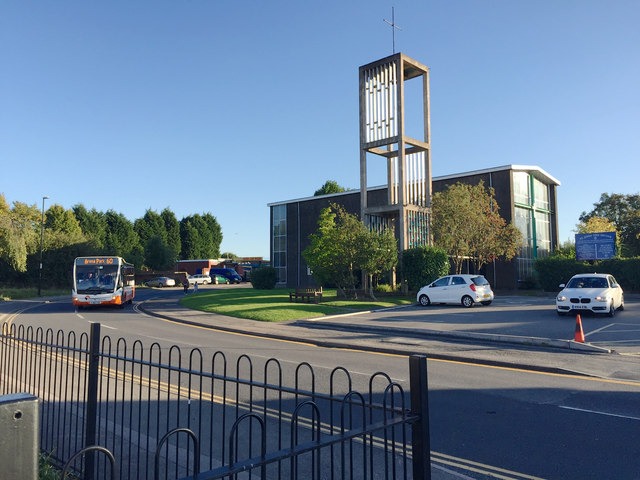
With the CovSoc visit to St. John the Divine Church coming up this week, our Vice Chair, Tim Brown, tells us some of the context of the construction of the church in Willenhall and the city’s post-war estates. Tim writes…..
St John the Devine is one of three churches designed by Basil Spence and built by Wimpey between 1954-57 using its ‘no fines’ method, which was regarded at the time as ‘innovative’. The other two are
• St Chad, Wood End
• St Oswald, Tile Hill.
Following on from the Coventry scheme, Basil Spence designed two similar churches in Leicester that were built in the late 1950s – the Church of St Hugh of Lincoln on the Eyres Monsell estate, and St Aidan’s Church on the New Parks estate. The latter was also built by Wimpey
No-fines houses, flats and other buildings were built with a ten-inch concrete shell cast in-situ. The concrete for the outer structure was cast in one operation using reusable formwork. The concrete had no fine aggregates (sand) – hence ‘no fines’. The external facade was normally rendered in grey. There has been a lengthy dispute over how and whether the voids between the concrete shells were filled with building rubble and / or aggregate!
‘No fines’ construction is notorious. It was widely used in Coventry (and elsewhere) for council post-war housing estates in Tile Hill, Willenhall and Wood End among others. There were major problems from 1950s onwards with cold, damp and mould. When Margaret Bullock (who ran the Wood End Tenants Association) was told in the 1960s that St Chad was ‘no fines’, she was alleged to have said that ‘God might put up with this c***, but we don’t”.
Funding
The War Damages Commission provided £50k to Coventry for the loss of a church in the city centre during the 2WW bombing. It was agreed in Coventry that it should be used to build three new churches in the growing post-war council suburbs. Design and construction, therefore, were required to be basic but innovative (and similar!).
As Wimpey was developing no fines council houses and flats on these estates, the company was invited to build the churches. There was apparently no competitive tendering process
Social development and churches
Building communities became a significant issue in the inter-war period with the growth of large new council estates. The National Council of Social Services (formed in 1919) was especially critical of the early estates. Amongst other things it called for what we would now call social infrastructure. This included community centres and churches (with the latter incorporating community facilities). By the end of the 1930s, this had become part of government guidance.
In post-war Coventry, therefore, provision of facilities in a central location (schools, libraries, playgrounds, shops, community centres, churches etc) was part of the original plans for all three estates that were based on the principle of a neighbourhood unit.
But delivering these facilities was challenging as the need for new housing was prioritised. From as early as the mid-1950s, incoming residents in both Willenhall and Wood End were complaining about the lack of facilities. This together with issues of damp and mould resulted in relative high numbers of requests by tenants for a transfer to ‘anywhere but Willenhall and Wood End’
The development of St John the Devine was therefore welcomed by the community and the City Council as well as the Bishop of Coventry.
Finally, in the late 1960s, a government-appointed organisation, the Central Housing Advisory Committee (CHAC), published a report on ‘Social Provision in New and Expanded Communities’. Although primarily focussing on new towns, it also covered large new council housing estates. Apparently, one of the unpublished working papers included a chapter on the role of churches and positively referenced the scheme in Coventry in the mid-1950s.
